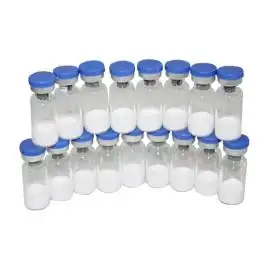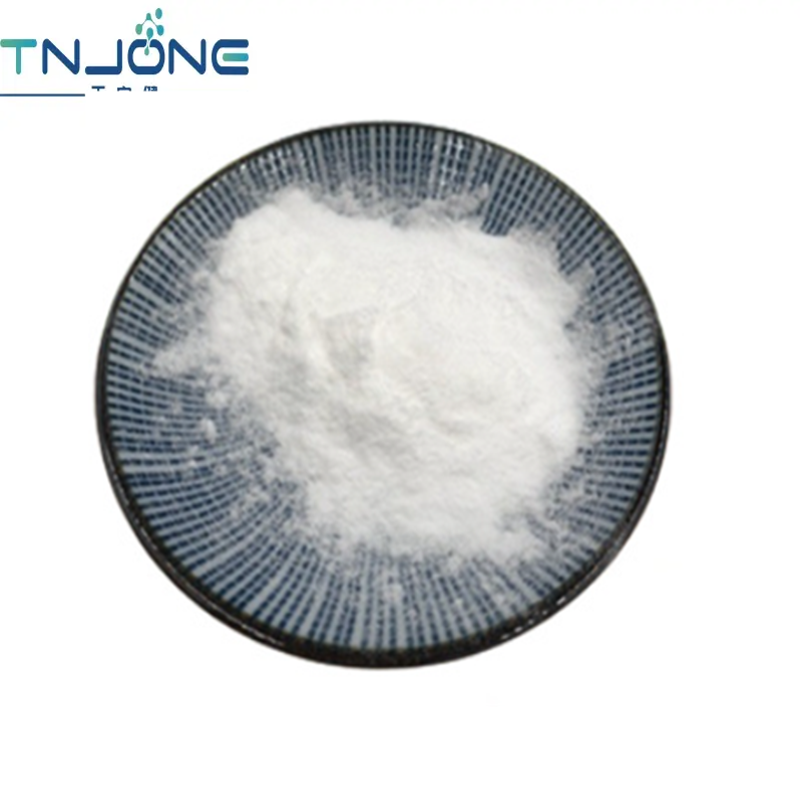-
Categories
-
Pharmaceutical Intermediates
-
Active Pharmaceutical Ingredients
-
Food Additives
- Industrial Coatings
- Agrochemicals
- Dyes and Pigments
- Surfactant
- Flavors and Fragrances
- Chemical Reagents
- Catalyst and Auxiliary
- Natural Products
- Inorganic Chemistry
-
Organic Chemistry
-
Biochemical Engineering
- Analytical Chemistry
-
Cosmetic Ingredient
- Water Treatment Chemical
-
Pharmaceutical Intermediates
Promotion
ECHEMI Mall
Wholesale
Weekly Price
Exhibition
News
-
Trade Service
In 2020, the outbreak of the new crown epidemic has brought "turbulent" changes to the world
.
For the field of biomedicine, the new crown epidemic has stimulated unprecedented enthusiasm for the development of treatments and vaccines against the new crown virus
However, in addition to the new crown therapy and vaccine, what impact has the new crown epidemic brought to drug research and development? What are the new trends in the global drug R&D pipeline in 2020? A few days ago, Pharmaprojects, a subsidiary of Informa, released the Pharma R&D Annual Review 2021 (the Pharma R&D Annual Review 2021)
.
This annual report has a history of nearly 30 years.
This annual report has a history of nearly 30 years.
Under the epidemic, the global drug R&D pipeline continues to expand
The outbreak of the new crown epidemic and the restrictions on social distancing brought about by it have brought the development of many industries around the world to a halt and decline
.
However, the annual report points out that the global drug R&D pipeline has not shrunk as of January 2021.
The global R&D pipeline (including pre-clinical, clinical, and drugs that are still being developed for other indications after marketing) contains a total of 18,582 drugs, an increase of 4.
▲The number of drugs in the global drug R&D pipeline from 2001 to 2021 (picture source: reference [1])
However, the analysis of drug data classified according to the research and development stage can reveal the impact of the new crown epidemic.
The number of drugs under research in the preclinical phase and the number of drugs under research in the phase 1 clinical phase is still up by about 6% compared with the previous year .
Reflects a relatively healthy momentum in early drug discovery and development
.
However, the number of drugs in Phase 2 and Phase 3 clinical trials only increased by 2% and 0.
The number of drugs under investigation in the preclinical phase and the number of drugs in the phase 1 clinical phase still increased by about 6% compared with the previous year.
▲Number of drugs in different clinical trials from 2007 to 2021 (picture source: reference [1])
Contributions of large pharmaceutical companies and small companies to the global R&D pipeline
Contributions of large pharmaceutical companies and small companies to the global R&D pipeline In the drug development ecosystem, there are not only large pharmaceutical companies with hundreds of drugs under research in the pipeline, but also small biotech and pharmaceutical companies with only one or two innovative therapies
.
In the past year, how did they contribute to the development of new drugs?
The report pointed out that in terms of large pharmaceutical companies, Novartis still has the largest drug R&D pipeline containing 232 drugs.
The company added 145 new drugs in 2021, and it also ranks first among major global pharmaceutical companies.
.
Roche's R&D pipeline ranking rose from 5th last year to 2nd
▲Based on the size of the drug R&D pipeline, the top 25 global pharmaceutical companies are ranked (data source: reference [1], WuXi AppTec's content team drawing)
In 2021, 16 of the Top 25 pharmaceutical companies have expanded their R&D pipelines.
Does this mean that major pharmaceutical companies have increased their contributions to the global drug R&D pipeline? However, statistics on the proportion of drugs in the pipeline found that the proportion of drugs in the pipeline of the Top 25 major pharmaceutical companies in the total pipeline drugs has dropped from 9.
47% to 9.
36%
.
The proportion of Top 10 pharmaceutical companies' pipelines has also decreased from 5.
16 of the top 25 pharmaceutical companies have expanded their R&D pipelines.
The proportion of drugs in the pipelines of the top 25 large pharmaceutical companies in the total pipeline drugs has dropped from 9.
47% to 9.
36% .
The proportion of Top 10 pharmaceutical companies' pipelines has also decreased from 5.
4% to 5.
27% .
The total number of companies with only one or two drugs in the pipeline increased to 19.
36%
.
As of January 2021, a total of 5,099 companies are conducting drug research and development, of which 46% are headquartered in the United States
.
Companies headquartered in China accounted for 9% .
In the past year, the number of pharmaceutical companies headquartered in China increased by 94 (23%) to 522
.
This reflects the rapid expansion of China's pharmaceutical industry
.
55% of the drugs in the global R&D pipeline have certain development activities located in the United States, and one-sixth of the drugs have certain development activities located in China, once again showing China's potential in drug development
.
.
Companies headquartered in China accounted for 9% .
In the past year, the number of pharmaceutical companies headquartered in China increased by 94 (23%) to 522
.
Anti-cancer therapies and gene therapies continue to grow rapidly
Anti-cancer therapies and gene therapies continue to grow rapidly The outbreak of the new crown epidemic has undoubtedly had a significant impact on the focus of drug research and development.
In the global research and development pipeline, the number of anti-infective drugs has increased by 22.
4% over the previous year , almost entirely due to the increase in drugs and vaccines against COVID-19.
Development
.
Previously, the number of anti-infective drugs was on a downward trend
.
4% over the previous year
The number of oncology drugs in the R&D pipeline reached 6,961 in 2021, an increase of 7.
0% compared with the previous year
.
Oncology is still the most popular research and development area in the world.
37.
5% of the drugs in the pipeline are related to oncology , setting a new high in the past 10 years
.
0% compared to the previous year, 37.
5% of the drugs in the pipeline are related to oncology
▲The number of drugs included in different therapeutic areas (picture source: reference [1])
▲The number of drugs included in different therapeutic areas (picture source: reference [1]) A further breakdown of the treatment field shows that the number of cancer immunotherapies is the largest in the global R&D pipeline, an increase of 8.
1% compared to the previous year
.
There are 3,712 cancer immunotherapies worldwide
.
This reflects the confidence of the drug research and development field in the treatment strategy of using the human immune system to fight cancer.
Other types of anti-cancer therapies are followed closely, and gene therapy is ranked third
.
The outbreak of the new crown epidemic has increased the number of antiviral drugs by 126%, making it the fastest growing branch in the field of drug research and development
.
The number of CAR-T therapies has also reached 612, making it into the top 10 for the first time in the ranking of the report
.
(The same therapy may have multiple labels.
For example, CAR-T therapy also belongs to cancer immunotherapy and gene therapy
.
)
.
After nearly 10 years of silence, gene therapy has risen rapidly in recent years and has received widespread attention from the industry
.
In this year's report, the number of gene therapies under development reached 1,589, an increase of 24.
8% in one year
.
The analysis of historical data on the number of gene therapies shows that in the last 5 years, the number of gene therapies has shown an explosive growth trend , which has tripled compared with the number in 2016
.
Since 2019, it has maintained its third place in the annual R&D report released by Pharmaprojects
.
8% in one year.
In the last 5 years, the number of gene therapies has shown an explosive growth trend.
▲The number of gene therapies has exploded in the past 5 years (picture source: reference [1])
The revival of gene therapy is due to the increase in the number of two types of therapies.
One type is in vitro gene therapy.
They are genetically engineered in vitro from cells obtained from the human body and then transferred back to the patient.
CAR-T therapy is a kind of In vitro gene therapy
.
The other type is in vivo gene therapy, which means that the manipulation of genes is carried out in the body
.
For gene therapy, what kind of viral vector is used to deliver transgenes is a concern of the industry
.
The reported analysis data shows that at present, adeno-associated virus (AAV) vectors are still the most common viral vectors in gene therapy, and they are widely used both in preclinical and clinical development stages
.
Adenovirus vectors are in the second place.
In addition to these two virus vectors, other types of virus vectors have also been studied, including herpes simplex virus, poxvirus, lentivirus and rhabdovirus
.
▲Data on the types of viral vectors used in gene therapy (picture source: reference [1])
Which targets are the most popular?
Which targets are the most popular? If the drugs in the research and development pipeline are classified according to their targets, it can be seen that the number of therapies under investigation that target the HER2 receptor is the largest
.
As a well-proven target in the treatment of breast cancer, HER2 therapy is the target of a variety of small molecule therapies, targeted therapies, and antibody-conjugated drug therapies
.
The new generation of antibody-conjugated drugs is no longer limited to breast cancer, but is used in clinical trials to treat HER2-expressing gastric cancer, non-small cell lung cancer and other cancer types
.
In addition to HER2, epidermal growth factor receptor (EGFR) and vascular endothelial growth factor A (VEFG-A), which are closely related to tumor growth and angiogenesis, are also popular targets
.
The rise of cancer immunotherapy is also reflected in popular targets
.
Among the Top 10 popular targets, 4 are related to immunotherapy.
They are PD-L1, PD-1, CD19 and CD3 .
A variety of immune checkpoint inhibitors targeting PD-L1 and PD-1 have been approved by the FDA.
CAR-T therapy targeting CD19 is the most important component of CAR-T therapy under development
.
However, a variety of bispecific antibody therapies recruit T cells to the vicinity of tumor cells by binding to the CD3 receptor on the surface of T cells to play their role in killing tumor cells
.
The number of research therapies targeting CD3 has increased by 28.
4%, reflecting the industry's focus on using bispecific antibodies to activate the anti-cancer immune response
.
.
The number of research therapies targeting CD3 has increased by 28.
4%, reflecting the industry's focus on using bispecific antibodies to activate the anti-cancer immune response
.
Outside of cancer, glucagon-like peptide 1 receptor (GLP-1R) ranks 10th, and it is an important target for the treatment of type 2 diabetes and obesity
.
The outbreak of the new crown virus has made the new crown virus spike protein a popular target ranked 20th
.
It is the target of many vaccines and neutralizing antibodies
.
Dopamine receptor D2 and serotonin receptor 2A are important targets for the treatment of various neurological diseases
.
▲Top25 protein targets in the global drug development pipeline (data source: reference [1], drawing by WuXi AppTec's content team)
Even under the impact of the new crown epidemic, the report shows that the pace of innovation in the drug development field has not slowed down.
Pharmaprojects found that the number of new drug targets added to the pipeline in 2020 reached 139, reaching the second highest level in the past 15 years , second only to In 2011 (the reason for the unusually high statistics of this year is that bacterial targets were added to the database)
.
Today, the number of targets targeted by therapies under research has reached 1,858, a significant increase from 1,766 last year
.
This trend lays the foundation for successful future drug development
.
▲Number of new drug targets discovered by Pharmaprojects over the years (picture source: reference [1])
The 2021 Pharmaceutical Research and Development Annual Report also analyzes the treatment model of the treatment under investigation and the focus of different drug research and development around the world
.
Due to space limitations, this article cannot be detailed one by one .
You can visit the Pharmaprojects website to download the full report
.
.
Reference materials:
Reference materials: [1] Pharma R&D Annual Review 2021.
Retrieved March 29,2021, from https://pharmaintelligence.
informa.
com/resources/product-content/pharma-randd-annual-review-2021
Retrieved March 29,2021, from https://pharmaintelligence.
informa.
com/resources/product-content/pharma-randd-annual-review-2021







